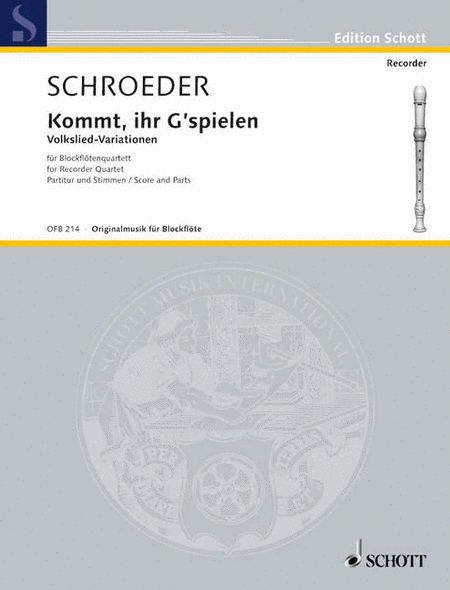Recorder quartet (SATB) - easy to intermediate - Digital Download SKU: S9.Q11339 Folk song variations. Composed by Hermann Schroeder. This edition: score and parts. Original Music for Recorder. Downloadable, Score and parts. Duration 5 minutes. Schott Music - Digital #Q11339. Published by Schott Music - Digital (S9.Q11339). Apart from his numerous church music works and organ compositions, the composer Hermann Schroeder (1904-1984) from Cologne also wrote a large number of chamber music works. His recorder quartet 'Kommt, ihr G'spielen' was created for the competition 'Jugend musiziert' and performed for the first time at an award winners' concert in Münster. The classical instrumentation of SATB recorders can be changed by having the bass played by the great bass flute or the violoncello. The well-known dancing tune from the Renaissance period inspired Schroeder to write a series of lively variations full of brio: Var. 1 turns the head motif into a free fantasia, Var. 2 puts the melody as fugato, Var. 3 is an agitated, polyphonic trio (SAT) with lively semiquaver figures, Var. 4 is a cheerful gigue, Var. 5 concludes the entire cycle in a virtuoso manner. A rewarding piece for tuition and concert, with a duration of about 5 minutes.Kommt, ihr G'spielen entstand für den Wettbewerb Jugend musiziert. Die klassische Besetzung mit SATB-Blockflöten kann auch abgewandelt werden, indem der Bass von der Großbassflöte oder dem Cello gespielt wird. Das bekannte Tanzlied aus der Renaissance inspirierte Schroeder zu einer Reihe von musikantisch-beschwingten Variationen. Ein dankbares Stück für Unterricht und Konzert.
